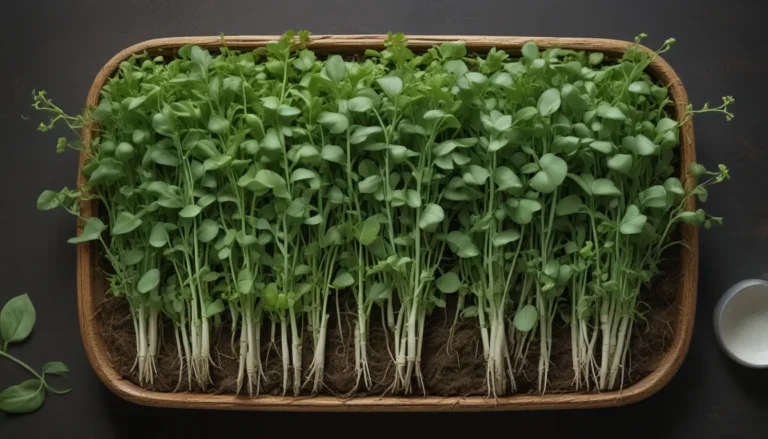A Comprehensive Guide to Growing Verbena in the South or Southwest

In the sunny regions of the South and Southwest United States, a genus known as verbena thrives in unique ways that differentiate it from its northern counterparts. With approximately 250 species falling under this genus, finding the right varieties for the hot, arid climates of the South and Southwest is essential for success in gardening.
In this comprehensive guide, we will explore how to grow, care for, propagate, and select the best verbena species for these regions. From propagation methods to managing pests and diseases, we will cover everything you need to know to grow vibrant and healthy verbenas in your garden.
What You’ll Learn
- Propagation
- How to Grow
- Growing Tips
- Pruning and Maintenance
- Species and Cultivars to Select
- Managing Pests and Disease
- Best Uses
- Quick Reference Growing Guide
Let’s dive in and get started on your journey to cultivating beautiful verbena plants in your garden!
Propagation
Growing verbena in the South or Southwest can be achieved through various propagation methods, including seeds, cuttings, and transplants.
From Seed
When starting from seeds, ensure to begin the germination process indoors 10 to 12 weeks before the last frost. Verbena seeds can be slow to germinate, potentially taking up to 28 days. It is recommended to sow seeds 1/8 of an inch deep in well-drained soil in a warm location. Once germinated, provide ample sunlight and transplant into individual pots after the seedlings have developed true leaves.
When planting outdoors, sow seeds a quarter-inch deep and space them 12 inches apart. Water thoroughly and ensure they receive enough sunlight for proper growth.
From Cuttings
Taking stem cuttings is another effective way to propagate verbena plants. Simply prepare a cutting, remove lower leaves, dip in rooting hormone, and plant in well-drained soil. Ensure to provide indirect light and maintain soil moisture until roots develop, usually within four to six weeks.
Transplanting
Transplanting potted verbena plants into the garden is a straightforward process. Prepare the planting hole, amend soil if necessary, and water thoroughly after planting. Provide adequate spacing between plants to promote airflow and ensure healthy growth.
How to Grow
In the hot climates of the South and Southwest, verbena thrives in full sun and well-drained soil. While young plants may require regular watering during establishment, mature verbenas are drought-tolerant and do not need excessive watering. Applying a slow-release fertilizer in the spring can help boost plant health and vitality.
Growing Tips
- Grow in full sun locations.
- Provide well-drained soil.
- Water during dry spells.
Pruning and Maintenance
Regular pruning is essential for verbena plants to ensure prolific bloom cycles. Trimming back one-quarter of the plant’s top growth after flowering can promote new growth and repeated blooms. For larger plantings, using a line trimmer can be an efficient way to maintain verbena plants.
Species and Cultivars to Select
Choosing the right verbena species for your region is vital to ensure their success. Here are some resilient varieties suitable for the South and Southwest:
- V. canadensis ‘Homestead Purple’: A popular cultivar that thrives in the South and spreads up to three feet.
- V. x hybrida ‘Texas Rose’: Texas-specific variety with bright red blooms.
- V. bonariensis (‘Purpletop Vervain’): Native to South America and naturalized in the Southeastern US.
For Southwestern regions, consider:
- V. peruviana (‘Pink’ and ‘Lavender’): Hardy species with colorful flowers.
- V. bracteata (‘Bigbract’): Prostrate plant with lavender flowers.
- V. gooddingii: Native to the Southwest with pinkish-lavender blooms.
Choose species that are adapted to your specific climate and soil conditions for optimal growth.
Managing Pests and Disease
While verbena plants in the South or Southwest are hardy, they can still be susceptible to pests and diseases. Common issues include aphids, leaf miners, spider mites, and powdery mildew. Treating infestations with neem oil, insecticidal soap, or fungicides can help control these problems and keep your plants healthy.
Best Uses
In hot and dry regions, verbena plants are ideal for ground cover, border plantings, or spilling over retaining walls and embankments. They are well-suited for butterfly gardens and attract pollinators with their colorful blooms.
Quick Reference Growing Guide
- Plant Type: Flowering perennial
- Flower/Foliage Color: Blue, lavender, pink, purple, red/green
- Water Needs: Low to moderate
- Hardiness (USDA Zone): 8-11
- Season: Spring, summer, fall
- Exposure: Full sun
- Spacing: 12 feet
- Maintenance: Low to moderate
- Height: Up to 3 feet
- Spread: Up to 3 feet
- Family: Verbenaceae
- Common Pests and Diseases: Aphids, leaf miners, spider mites, thrips, whiteflies; powdery mildew
- Species: Bonariensis, bracteata, canadensis, gooddingii, peruviana, and hybrids
Ensure to select the right species for your region and enjoy the vibrant blooms and easy maintenance of verbena plants.
Conclusion
With proper care and selection of suitable varieties, growing verbena in the South or Southwest can be a rewarding experience. By following the tips and guidelines outlined in this guide, you can create a vibrant garden filled with colorful blooms and resilient plants. Experiment with different species and cultivars to find the perfect verbena variety for your specific location.
Do you have experience growing verbena in the South or Southwest? Share your insights and success stories in the comments below! Feel free to showcase your thriving verbenas and inspire others to cultivate these beautiful plants.
For more information on drought-tolerant plants and garden care, check out additional guides on agave, ornamental grasses, and Russian sage.
Remember, gardening is an enriching journey that allows us to connect with nature and create beautiful outdoor spaces. Enjoy the process and watch your verbena garden flourish in the sunny landscapes of the South and Southwest!
And for more information about growing drought tolerant plants, check out these guides next:
- How to Grow and Care for Agave in the Garden
- Easy Landscaping with Ornamental Grasses: Simple Tips for Carefree Success
- How to Grow and Care for Russian Sage





